Carshalton Carnival, Merton Priory: On Saturday 12th June 2004 I went to photograph the carnival in Carshalton and from there went on to an open day at Merton Priory, a scheduled ancient monument.
Carshalton Carnival
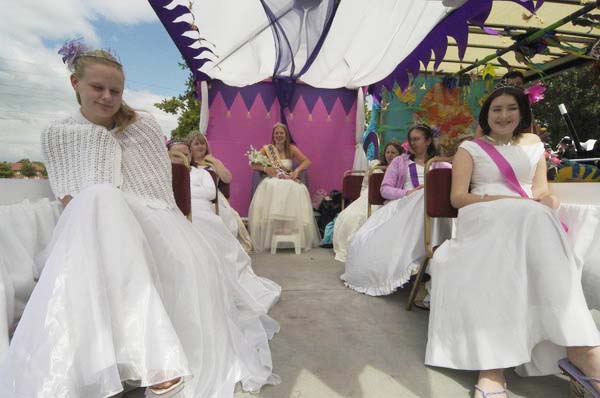
It seems unclear when Carshalton Carnival first began, but it was certainly taking place in the 1930s, usually held on the second Saturday in June.
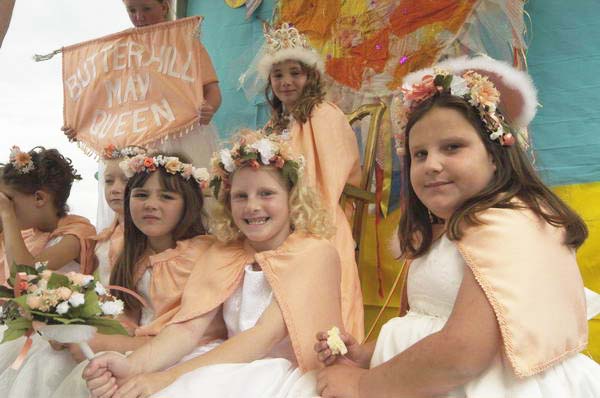
By 2004 many other local carnivals were fading away but the event in Carshalton appeared to still be going strong, although there were fewer floats than I had expected and almost all the groups taking part seemed to be groups of children.
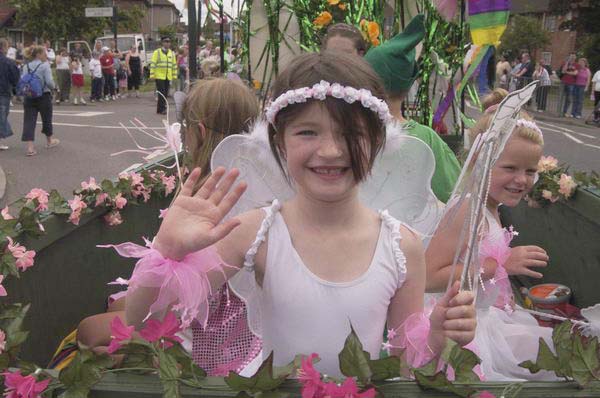
Carnivals like this, organised by the local Rotary and Round Table, raise money for various charities and the Rotary had brought their Santa waving from the chimney of a very small mobile home. Carshalton’s Lavender Farm was represented by a bike-hauled trailer.
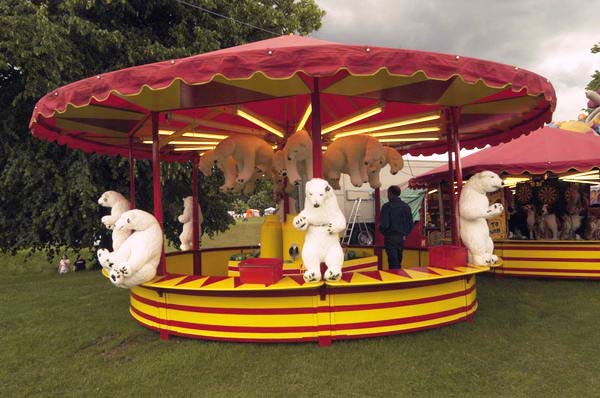
The parade ended at the funfair taking place in Carshalton Park. I took a few pictures there too.
More pictures on My London Diary
Merton Priory Chapter House – Colliers Wood
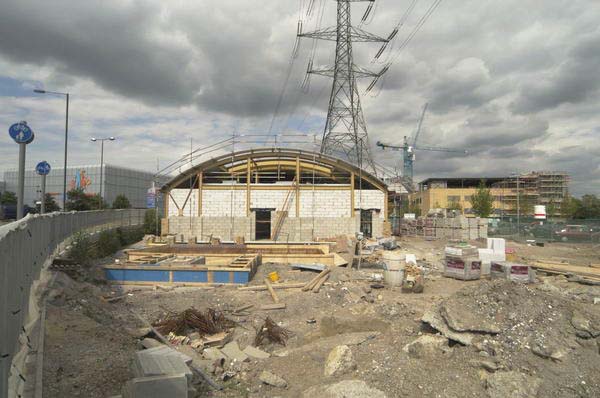
Merton Abbey was one of the most important places in England from 1114 until Henry VIII dissolved it in 1538. The Abbey church was around the same size as Westminster Abbey and as fine a building as existing cathedrals such as Salisbury, but its fine stonework was taken down and used in other buildings, particularly Henry VI1I’s new Nonsuch Palace in nearby Cheam where building began the same year, though this in turn was demolished in 1683.
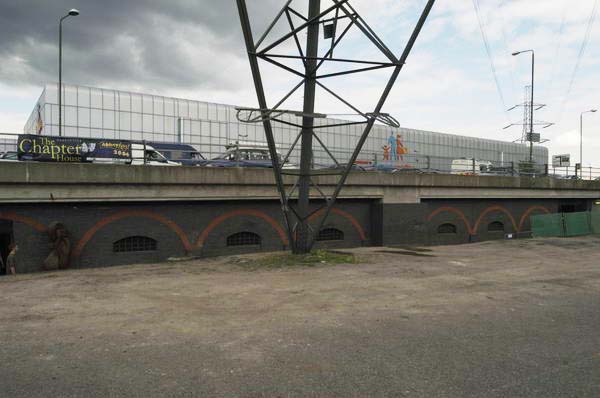
Merton Abbey was more important than Westminster or Canterbury. Here the first English laws, the eleven ‘statutes of merton’ were written in 1236, and its college established here moved to Oxford an became one of the three that started Oxford University in the 1260s.
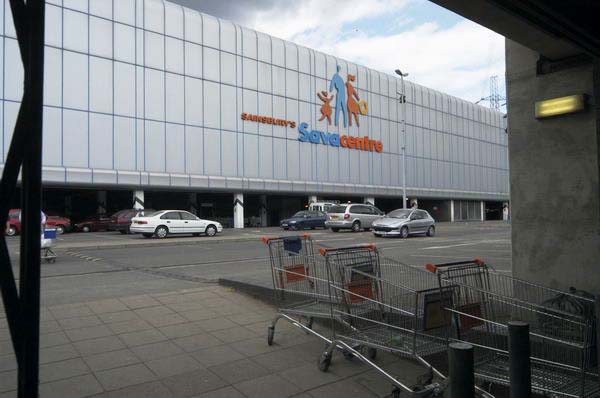
The site remained derelict but part by the River Wandle became a calico printing works in 1724 using the power of a large waterwheel.
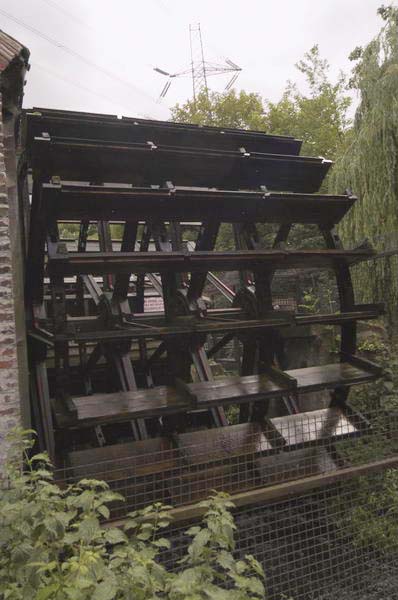
Alfred Liberty took over Littler’s Print Works here to print the fabrics for his Regent Street store, taking over the site completely in 1904 and using parts of it until 1977.
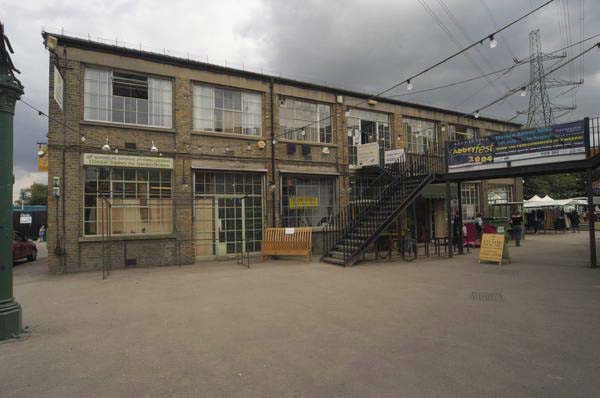
A little to the north in the Abbey site William Morris set up works in 1881 which produced decorated glass, printing fabrics and other goods until 1940. I don’t think anything remains of his works but there is a William Morris pub on the former Liberty site. And the world’s first public railway, the horse-drawn Surrey Iron Railway, ran through the site beside the River Wandle in 1804, taking goods to the Thames at Wandsworth.
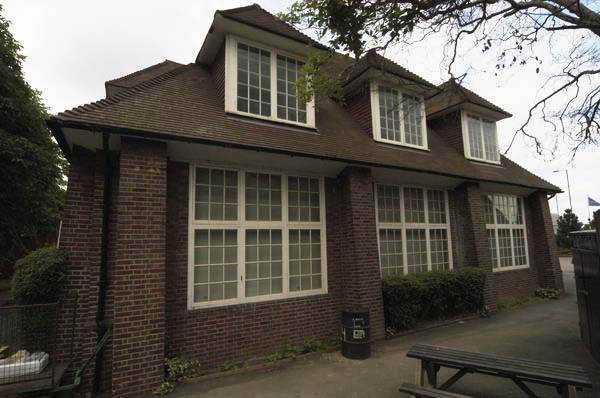
Archaelogical investigations of the site between 1914-1920 established the floor plans of the former Abbey, uncovering its foundations. In 1959 a garden was created on the site of the main altar of the church and ‘given in perpetuity‘ to the people of Merton.
This now lies several feet below the surface of the car park of the Sainsbury’s ‘savacentre’ along with most of the rest of the huge church site, with just a little still present beneath the edge of the supermarket. Some parts of the original walls around the large Abbey site have survived.
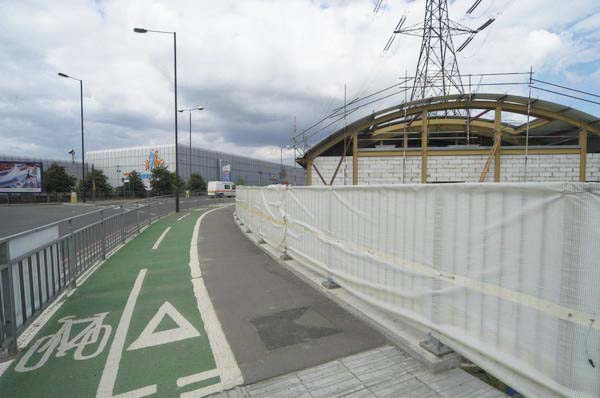
A new dual carriageway, Merantun Way was built for the new traffic to the various shops, and the ruins of the chapter house were preserved in an enclosed area under this. Local volunteers had formed the Merton Priory Trust in 2003 and were holding an open day when I visited.
Back then the area under the road was rather dimly lit and I don’t think I took any pictures of the interior with its foundations. Cerrtainly I put none online. Now it has much better lighting and a new visitor centre with a small museum and is open on Summer Sundays to the public. You can see pictures on the IanVisits site. The Wandle Valley site shows pictures of some of the work being carried out and there is much more on the Merton Priory site.
Flickr – Facebook – My London Diary – Hull Photos – Lea Valley – Paris
London’s Industrial Heritage – London Photos
All photographs on this page are copyright © Peter Marshall.
Contact me to buy prints or licence to reproduce.